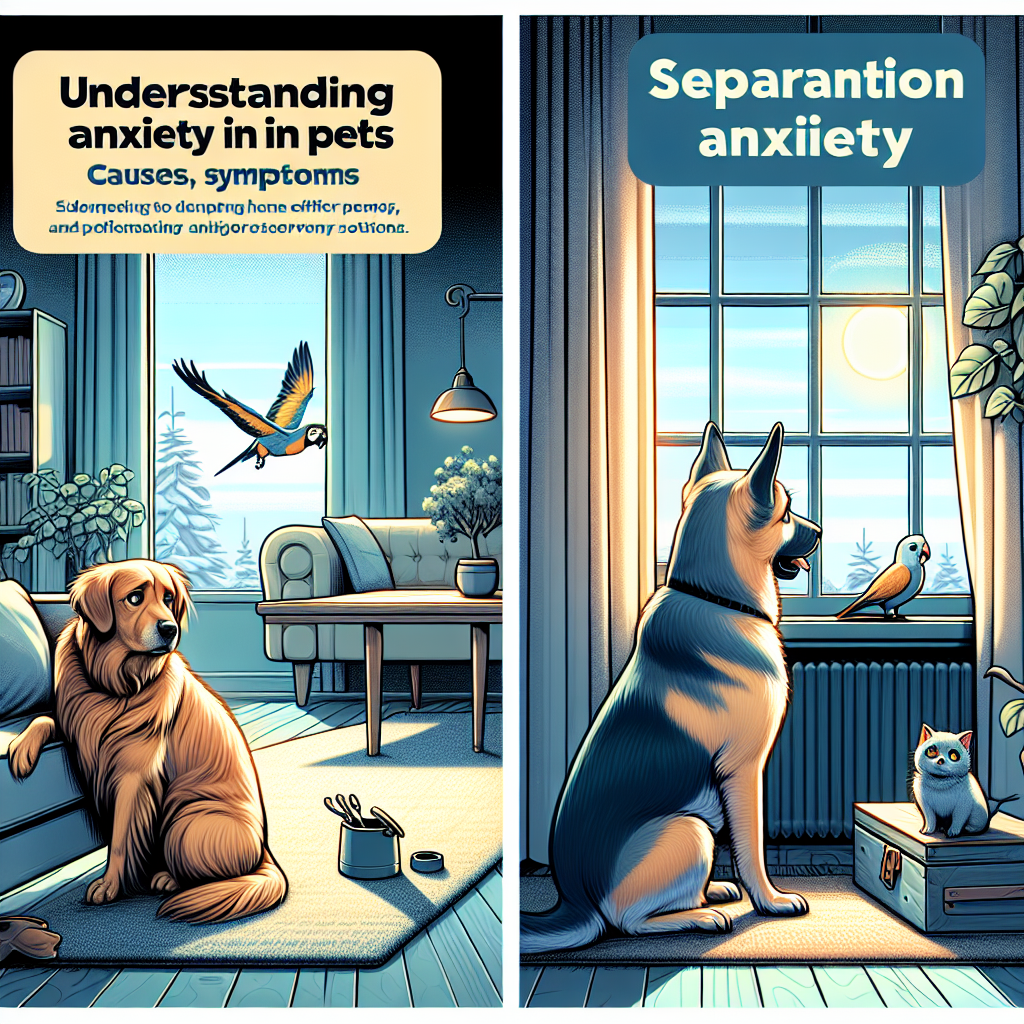Separation anxiety is a common behavioral issue that affects many dogs and, to a lesser extent, cats. It can manifest in various ways, impacting not only the pet but also the owner’s peace of mind. Let’s dive into what separation anxiety is, its causes, symptoms, diagnosis, treatment options, and preventive measures.
What is Separation Anxiety?
Simple separation anxiety occurs when pets become distressed due to being left alone or separated from their owners. This emotional condition can lead to excessive barking, destructive behavior, and even self-harm. Understanding the roots of this anxiety is crucial for effective management.
Causes of Separation Anxiety
Separation anxiety can stem from various factors, including:
1. Change in Environment
Pets that have recently changed homes, experienced a loss, or faced significant family changes – like a new baby or a family member moving out – may feel insecure.
2. Lack of Early Socialization
Pets that haven’t been properly socialized during their formative months might struggle with separation. It’s vital to expose them gradually to different environments and situations.
3. Genetics
Some breeds tend to be more prone to anxiety. Breeds like Labrador Retrievers and German Shepherds may exhibit higher tendencies towards separation anxiety.
4. Traumatic Experiences
Negative past experiences, such as abandonment, abuse, or even stays at a shelter, can contribute to anxiety in pets.
Symptoms of Separation Anxiety
Recognizing the symptoms of separation anxiety is essential for early intervention. Common signs include:
1. Vocalization
Excessive barking, whining, or howling when left alone is a primary sign of distress.
2. Destructive Behavior
Pets might chew on furniture, dig holes, or scratch at doors and windows. This behavior is often a desperate attempt to escape and reunite with their owner.
3. House Soiling
Some pets, despite being house-trained, may urinate or defecate indoors due to anxiety.
4. Pacing or Restlessness
Animals may show signs of agitation, pacing back and forth, or displaying repetitive behaviors.
5. Excessive Grooming
This can result in skin irritations or bald patches. It’s a self-soothing behavior in stressed pets.
Diagnosing Separation Anxiety
If you suspect your pet has separation anxiety, consult with a veterinarian or an animal behaviorist. They will conduct a thorough examination, considering the pet’s history, behavior patterns, and overall health.
Diagnostic Steps:
- Review of behavioral history
- Physical examination to rule out medical issues
- Observation of behavior patterns in both the owner’s presence and absence
Treatment Options for Separation Anxiety
Addressing separation anxiety often requires a multifaceted approach, which may include behavioral training, environmental changes, and sometimes medication. Here are some effective solutions:
1. Gradual Desensitization
Slowly acclimate your pet to being alone. Start with short periods and gradually increase the time as your pet becomes more comfortable.
2. Positive Reinforcement
Reward your pet when they remain calm during your absence. This can involve treats or praise when you leave and return without signs of distress.
3. Interactive Toys
Provide stimulating toys that keep your pet occupied during your absence, like puzzle toys or chew items stuffed with treats.
4. Calming Aids
Consider using calming treatments like natural supplements that promote relaxation, or anxiety wraps designed to provide comfort.
5. Professional Help
If the anxiety persists, consulting a professional dog trainer or behaviorist experienced with anxiety issues can provide tailored strategies and support.
Preventing Separation Anxiety
While it may not be possible to eliminate all risks, proactive measures can significantly reduce the likelihood of developing separation anxiety:
1. Early Socialization
Expose your puppy or kitten to a variety of people, pets, and environments early on to help them feel secure and adaptable.
2. Establish a Routine
Animals thrive on consistency. Having a daily routine can create a sense of predictability and security for your pet.
3. Practice Short Departures
Consistently practice leaving your pet alone for short periods to build their confidence.
4. Create a Safe Space
Designate a comfortable, secure area with their bed, toys, and something familiar, like a piece of your clothing, to help ease their anxiety.
5. Avoid Over-Excessive Reassurance
While it’s tempting to comfort your pet extensively when returning home, overly dramatic greetings can strengthen the anxiety. Instead, keep arrivals and departures low-key.
Final Thoughts
Understanding and addressing separation anxiety can lead to a more peaceful home environment for both you and your pet. By recognizing the causes and symptoms, diagnosing effectively, and implementing the right treatments and preventive strategies, you can help your furry friend feel more secure and less anxious when left alone. Be patient; overcoming separation anxiety takes time and consistent effort, but the results will be worth it for both you and your pet.





